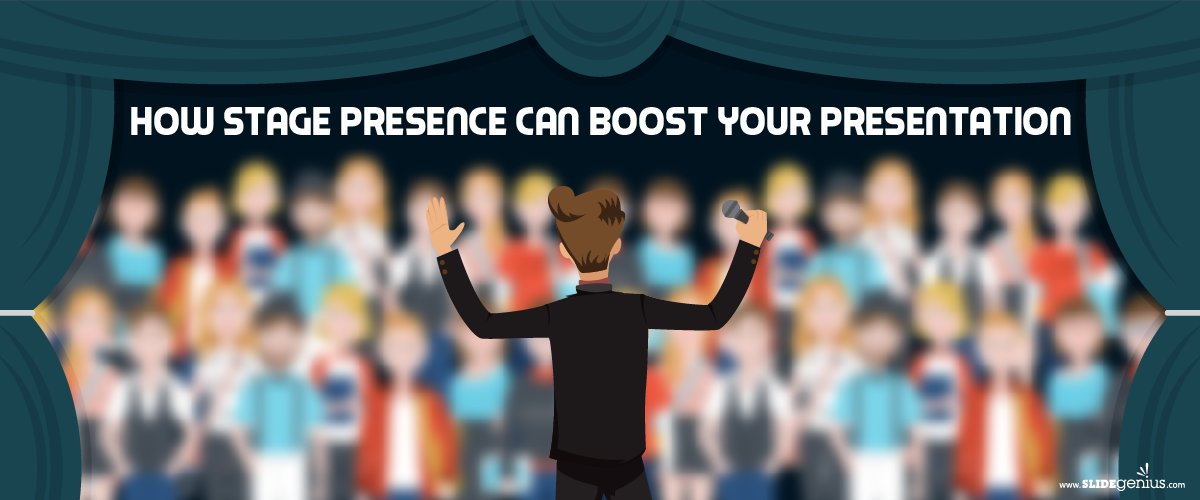A speaker standing still throughout a presentation is dull to watch. The audience may not relate with your message if you don’t show enough interest in delivering it. In the same way, if you move excessively onstage, you may risk distracting your viewers from the content of your presentation. Exaggerated and unnecessary movements only make you look like you’re trying too hard. You should know how to carry yourself under the limelight. Smoothly transition from one point to another using fluid movements.
The Power of Body Language
Dynamic speakers maximize their stage presence by moving around and owning the stage. They also use appropriate body movements that help accentuate their point. Moving purposely and naturally will give you an opportunity to foster a bond with your audience. Being dynamic onstage will endear you to your audience and help you win their attention and favor.

Captivate Interest
A compelling speech and a well-designed PowerPoint deck will only win you half the battle. Ultimately, the success of your presentation lies on how well you deliver it. What’s a good content if it can’t be understood by the audience? When stressing an idea, match your words with the proper gesture and non-verbal cue. Use appropriate body language so as to stress your message. Remember, content, design, and delivery work hand in hand. You need to put equal emphasis on all three for your presentation to be successful.

Stimulate Emotions
Certain body movements are so engaging that you can use them to invite your listeners to join in the conversation. You can make your presentation feel like a dialogue rather than a monologue by simply putting a variation in your movements. The more you make your audience feel included, the more you can build rapport with them. Once you have that connection, your audience will be more likely to remember your message and share it to others.

Highlight Transitions
When you’re relating a narrative that involves occurrences from the past and present and some hopes or predictions for the future, you can move around the stage to establish the transitions between them. For instance, you can start ambling to one side of the platform to communicate that you’re talking about the past. Then, you can walk to the other side to show a change of perspective. Your audience will get a hint that you’re now talking about the present. Finally, when you return to the center, your audience will know that you’re moving on to future events. Needless to say, you need to make these transitions look and feel natural. Draw a pattern in your movements, but make sure the audience won’t detect it.
Move with Meaning
Now that you know how important body language is when delivering a presentation, you’re probably wondering how you can use it to your advantage. There’s only one sure way to master this skill: REHEARSE. As ironic as it sounds, rehearsing your movements onstage will help you carry and deliver them with grace. Practice until your non-verbal expressions look seamless and natural. Moving with purpose and meaning will make you look confident onstage. But more important than this, it can make your audience feel more engaged and included. Make sure not to forego an impactful body language.
Resources:
Galarza, Erin. “Public Speaking: Developing Stage Presence.” Percolate. February 25, 2015. blog.percolate.com/2015/02/public-speaking-developing-stage-presence
Gallo, Carmine. “The Presentation Secrets of Steve Jobs: How to be Insanely Great in Front of Any Audience.” Presensatie. 2010. www.presensatie.nl/wp-content/uploads/2014/08/Presentation-Secrets-Of-Steve-Jobs.pdf
Genard, Gary. “The 5 Key Body Language Techniques of Public Speaking.” Genard Method. May 31, 2015. www.genardmethod.com/blog/bid/144247/The-5-Key-Body-Language-Techniques-of-Public-Speaking
Young, Graham. “To Move or Not to Move When Presenting.” Young Markets. October 10, 2012. youngmarkets.wordpress.com/2012/10/10/to-move-or-not-to-move-when-presenting
“Gestures: Your Body Speaks.” Toastmasters International. June 2011. web.mst.edu/~toast/docs/Gestures.pdf








